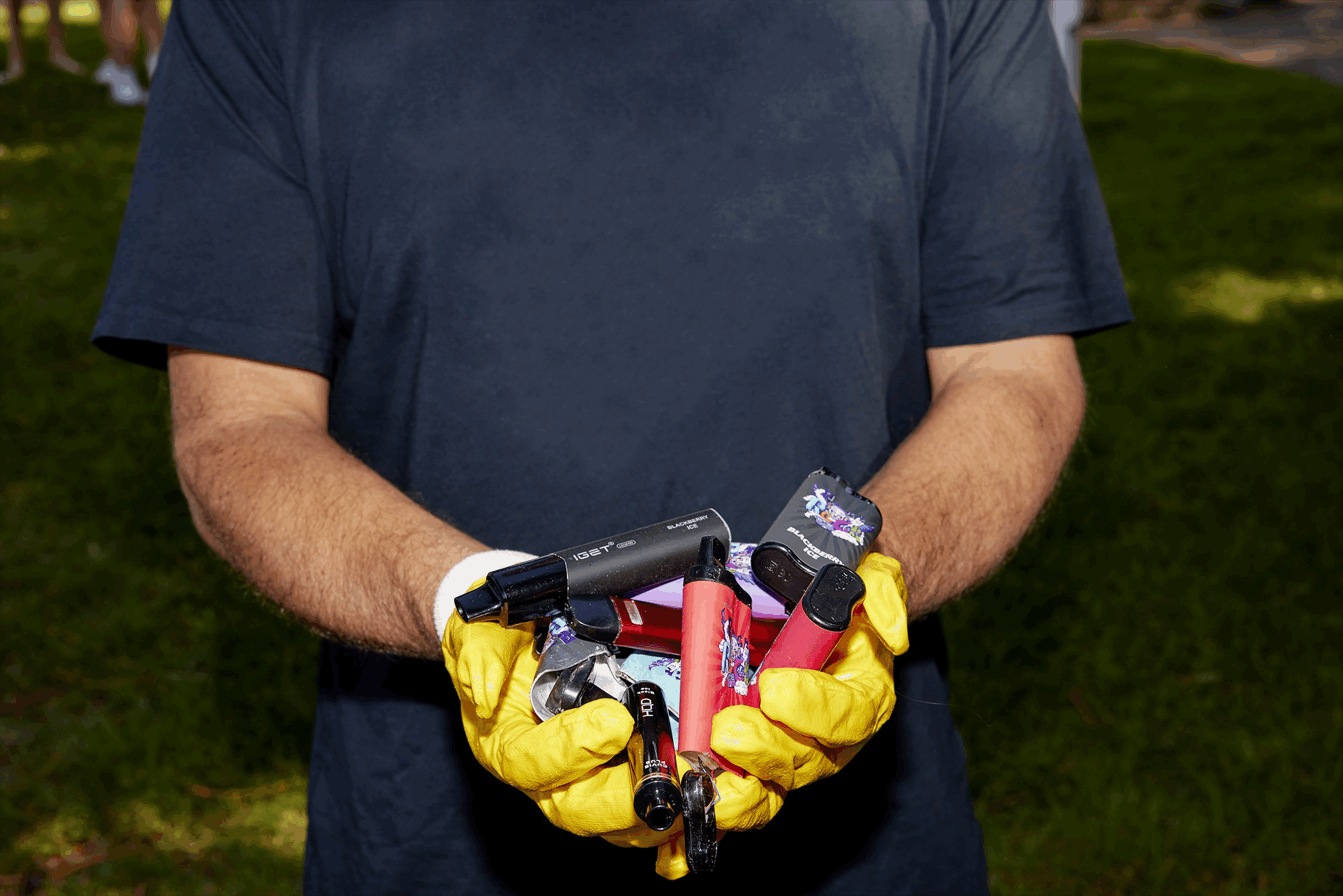Vapes are problematic as litter and in landfill as they contain a battery, electronic circuitry, hazardous chemicals and plastic.
THE PROBLEM
Single-use vapes (e-cigarettes) are ubiquitous across the country despite Federal legislation banning their sale. While non-therapeutic vapes are banned in Australia, therapeutic vapes are still available in pharmacy settings to patients 18 years or older without a prescription (aside from in WA).
All vapes are classified as e-waste as they contain a lithium-ion battery and electronic circuits. They also contain chemical and hazardous waste, including heavy metals like lead or mercury, and hard plastic. The complexity of these devices makes them difficult to recycle. As a result, many vapes are disposed of in landfill or simply discarded in the environment.
In Clean Up Australia’s Litter Report FY24, vapes were collected from 30.1% of sites surveyed [22.4% of sites in FY23]. Littered vapes leach metals, toxins and nicotine into surroundings as well as present a fire risk.
In garbage trucks and under compression, vapes run the risk of entering a dangerous state called thermal runway – in which the lithium-ion battery heats exponentially, leading to fires. Luckily, it is safe to pick up, store and dispose-of vapes through designated recycling locations. Never dispose of vapes in your kerbside bin.


